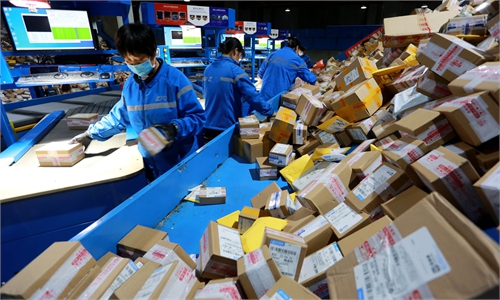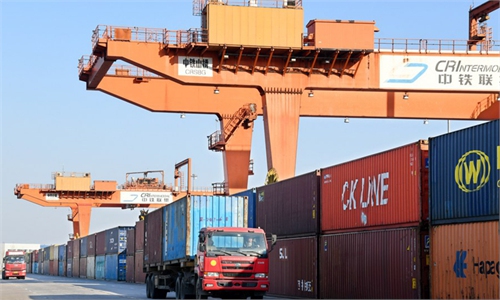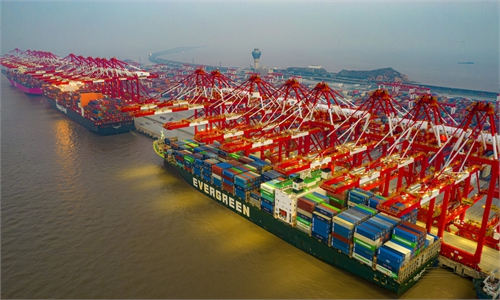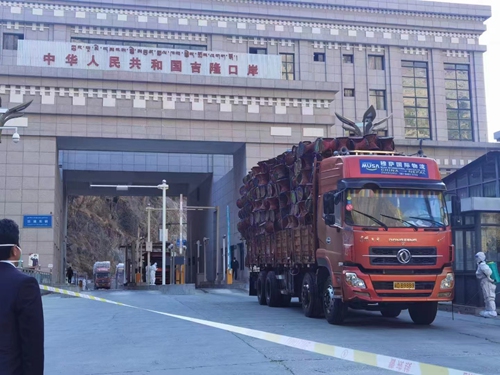
Gyirong Customs, affiliated with Lhasa Customs, in Southwest China's Xizang Autonomous Region, completes the customs clearance supervision of the first batch of imported goods from Nepal after the resumption of two-way trade on December 28, 2022. Photo: Courtesy of Lhasa Customs
Chinese ports, ranging from Suifenhe, bordering Russia in Northeast China's Heilongjiang Province, to Gyirong, Southwest China's Xizang Autonomous Region bordering Nepal, have seen rising traffic since the government optimized epidemic response.
China is now seeing renewed momentum for an economic recovery. The recent relaxation of epidemic restrictions, simplified customs procedures and facility upgrades at major ports all signal an economic and trade rebound, observers said.
The General Administration of Customs issued a notice on December 28, asking local branches to promote orderly and steady resumption of cargo transport at ports, a move that produces an immediate positive effect.
The largest and the only transportation passage of its kind on the China-Russia border river Heilongjiang River opened to traffic on Tuesday after three years of closure. The passage, which connects Luobei and Russia's Amurzet will benefit bilateral trade.
On Monday, Suifenhe announced the full resumption of cross-border cargo transport while lifting restrictions for epidemic control, a move that a manager surnamed Tian of Suifenhe Tengda International Freight, which is in food and timber businesses between China and Russia, applauded.
Tian said the major changes include lower production cost and an improved application procedure.
"It used to cost about 3,000 yuan ($436) to hire workers to load and unload imported goods for sterilization," Tian said.
Another impressive change is the simplified application procedure for border crossings. It used to take more than 10 days, while it now can be done in a single day, he said.
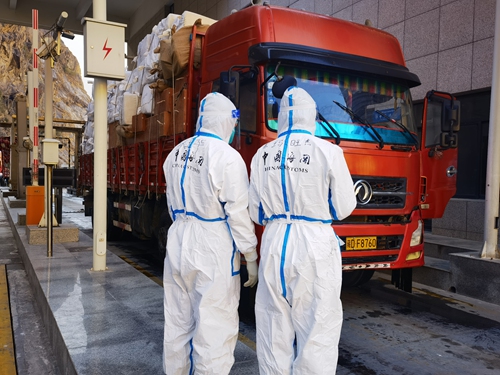
Gyirong Customs, affiliated with Lhasa Customs, in Southwest China's Xizang Autonomous Region, completes the customs clearance supervision of the first batch of imported goods from Nepal after the resumption of two-way trade on December 28, 2022. Photo: Courtesy of Lhasa Customs
In the Gyirong Port bordering China and Nepal, the first batch of imported goods from Nepal was delivered to China on December 28, the first time since it closed on March 23, 2020.
The port's exports were restored in July 2020, providing much-needed goods to the Nepali market, but imports didn't resume until December.
Since its full resumption, Gyirong port has imported 38.7 tons of goods from Nepal with a value of 825,800 yuan, a statement that Lhasa Customs sent to the Global Times on Wednesday showed.
The port is by far the largest land port between China and Nepal, playing the pillar role in trade. From January to November, Gyirong port exported 42,400 tons of Chinese goods with a value of 1.625 billion yuan, Lhasa Customs said.
"The resumption of two-way trade has brought a new atmosphere to the development of trade companies and the recovery of the local economy," said Xu Bin, manager of a local trading company.
Manzhouli, a transportation hub bordering Russia, has resumed normal operations after lifting epidemic restrictions for cargo.
From Sunday to Tuesday, the daily average volume of imports at the Manzhouli railway port reached 50,000 tons, a marked increase from December, Manzhouli customs said. Exports remained stable, at an average of about 9,000 tons per day, the customs added.
Other ports such as Ruili, a major land port in Southwest China's Yunnan Province that borders Myanmar, are busy preparing for reopening.
The steady resumption of ports in China will inject new impetus into regional and global trade growth, He Dengcai, deputy director of the China Federation of Logistics and Purchasing, told the Global Times on Wednesday.
